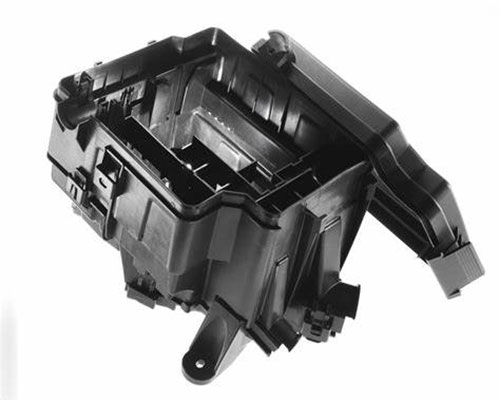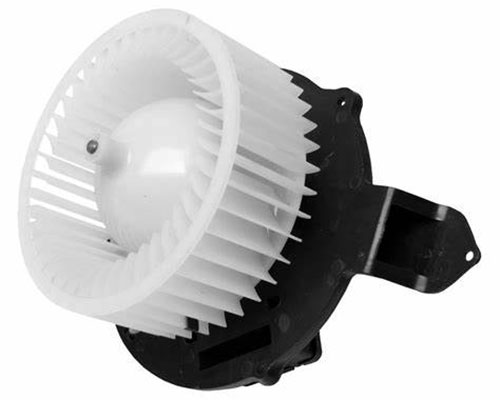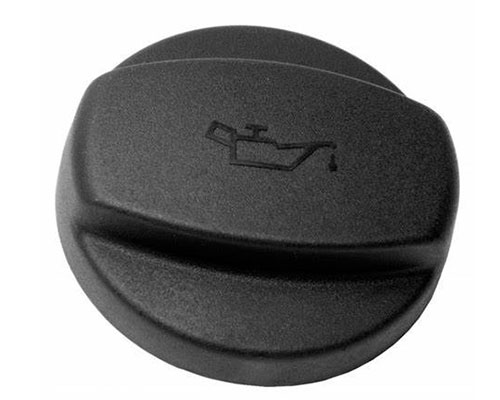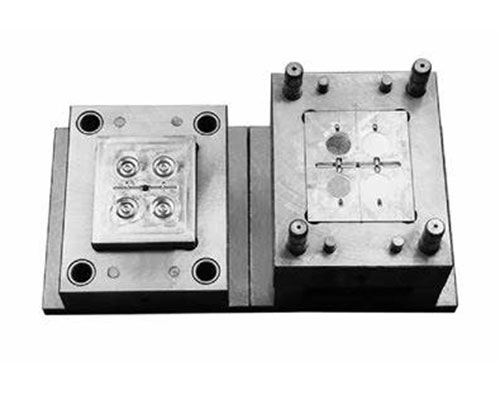Prototyping and Manufacturing Application in Renewable Energy parts Industries
Accelerate Renewable Energy Solutions with Yigu’s Manufacturing Expertise:
Yigu Technology delivers cutting-edge rapid prototyping and mass production services tailored for the renewable energy sector. From concept to scale, we empower your green innovations.
Key Solutions:
- ✅Fast Prototyping: Reduce time-to-market with 3D printing, CNC, and agile design.
- ✅High-Volume Production: Scalable manufacturing for solar, wind, and energy storage systems.
- ✅Material Innovation: Advanced composites and metals for durable, efficient components.
- ✅Cost Efficiency: Optimized processes to lower production costs without compromising quality.
- ✅End-to-End Support: DFM analysis, tooling, and assembly for seamless integration.
Why Yigu? Precision, speed, and sustainability—partner with us to transform renewable energy ideas into reality.
1. Introduction to Rapid Prototyping and Mass Production in Renewable Energy
1.1 Definition of Rapid Prototyping
Rapid prototyping is a group of techniques used to quickly fabricate a scale model of a physical part or assembly using three-dimensional computer-aided design (CAD) data. It is widely used in various industries to accelerate the product development cycle. In the context of renewable energy, rapid prototyping allows for the quick creation of components such as wind turbine blades, solar panel parts, and energy storage system components. This technology enables engineers to test and refine designs more efficiently, reducing the time and cost associated with traditional prototyping methods.
1.2 Overview of Mass Production Techniques
Mass production techniques are essential for scaling up the manufacturing of renewable energy components. These techniques include injection molding, extrusion, and casting, which are commonly used to produce large quantities of parts with high precision and consistency. In the renewable energy sector, mass production is crucial for reducing costs and increasing the availability of renewable energy technologies. For example, the production of solar panels has benefited significantly from mass production techniques, with global production capacity reaching over 200 GW per year. This scale of production has led to a significant reduction in the cost per watt of solar energy, making it more competitive with traditional fossil fuels.
1.3 Importance in Renewable Energy Sector
The integration of rapid prototyping and mass production techniques is vital for the renewable energy sector. Rapid prototyping allows for the quick iteration and optimization of renewable energy components, ensuring that they are both efficient and cost-effective. Once a design is finalized, mass production techniques can be employed to produce large quantities of these components, making renewable energy technologies more accessible and affordable. This combination of rapid prototyping and mass production has been instrumental in the rapid growth of the renewable energy industry, contributing to the global transition towards sustainable energy sources.
2. Rapid Prototyping Techniques for Renewable Energy Components
2.1 Additive Manufacturing (3D Printing)
Additive manufacturing, commonly known as 3D printing, has revolutionized the way renewable energy components are prototyped. This technology builds parts layer by layer from digital models, offering unparalleled design flexibility and speed. In the renewable energy sector, 3D printing is particularly advantageous for creating complex geometries, such as the aerodynamic profiles of wind turbine blades. For example, researchers at the National Renewable Energy Laboratory (NREL) have used 3D printing to produce wind turbine blades with intricate internal cooling channels, which enhance performance and durability. These prototypes can be created in a matter of days, compared to weeks or months using traditional methods. Additionally, 3D printing reduces material waste, as it only uses the exact amount of material needed to build the part. This not only lowers costs but also aligns with the sustainable principles of the renewable energy industry.
2.2 CNC Machining
CNC (Computer Numerical Control) machining is another rapid prototyping technique widely used in the renewable energy sector. It involves the use of computer-controlled machines to cut and shape materials with high precision. CNC machining is particularly useful for creating molds and prototypes of renewable energy components that require tight tolerances. For instance, in the production of solar panel frames, CNC machining ensures that the components fit perfectly, enhancing the overall efficiency and durability of the solar panels. According to a study by the International Renewable Energy Agency (IRENA), CNC machining can achieve a tolerance level of ±0.01 mm, which is crucial for the precision required in renewable energy applications. This technique also allows for the rapid production of multiple prototypes, enabling engineers to quickly test and iterate designs. Furthermore, CNC machining can work with wide a range of materials, including metals, plastics, and composites, making it a versatile option for prototyping various renewable energy components.
2.3 Injection Molding
Injection molding is a mass production technique that has also found applications in the rapid prototyping of renewable energy components. This process involves injecting molten material into a mold, where it cools and solidifies into the desired shape. Injection molding is highly efficient for producing large quantities of identical parts with high precision and consistency. In the renewable energy industry, injection molding is commonly used to produce plastic components for solar panels, such as junction boxes and connectors. For example, a leading solar panel manufacturer reported that by using injection molding, they were able to increase production efficiency by 50% while maintaining a defect rate of less than 0.1%. The ability to produce high-quality parts at scale makes injection molding an essential technique for the mass production of renewable energy components. Additionally, advancements in injection molding technology, such as the use of recyclable materials and energy-efficient machines, have further enhanced its sustainability and cost-effectiveness in the renewable energy sector.
3. Mass Production Methods in Renewable Energy
3.1 Large-Scale Injection Molding
Large-scale injection molding plays a crucial role in the mass production of renewable energy components. This technique is highly efficient for producing large quantities of identical parts with high precision and consistency. In the renewable energy sector, injection molding is extensively used to manufacture plastic components for solar panels, such as junction boxes, connectors, and frames. These components are essential for the functionality and durability of solar panels. For example, a leading solar panel manufacturer reported that by using large-scale injection molding, they were able to increase production efficiency by 50% while maintaining a defect rate of less than 0.1%. This level of efficiency and quality control is critical for meeting the growing demand for solar energy technologies.
Moreover, advancements in injection molding technology have further enhanced its sustainability and cost-effectiveness. The use of recyclable materials and energy-efficient machines has reduced the environmental impact of the manufacturing process. According to a study by the International Renewable Energy Agency (IRENA), the adoption of these advanced technologies has led to a 20% reduction in energy consumption and a 30% reduction in material waste in injection molding processes. These improvements not only align with the sustainable principles of the renewable energy industry but also contribute to the overall cost reduction of renewable energy technologies.
3.2 Stamping and Forging
Stamping and forging are essential mass production techniques used in the renewable energy industry, particularly for manufacturing metal components. These techniques involve shaping metal sheets or blocks into desired forms through the application of force. In the context of renewable energy, stamping and forging are commonly used to produce components for wind turbines, such as turbine blades, hubs, and towers. These components require high strength and durability to withstand the harsh operating conditions of wind farms.
For example, a major wind turbine manufacturer reported that by using stamping and forging techniques, they were able to produce turbine blades with a tensile strength of over 600 MPa and a fatigue life of more than 1 million cycles. This level of performance is crucial for ensuring the reliability and longevity of wind turbines. Additionally, stamping and forging techniques allow for the production of large and complex metal components with high precision and consistency. According to a study by the American Wind Energy Association (AWEA), these techniques have enabled the production of wind turbine components with a dimensional accuracy of ±0.5 mm, which is essential for the proper assembly and operation of wind turbines.
Moreover, the use of advanced materials and manufacturing processes in stamping and forging has further enhanced the performance and sustainability of renewable energy components. For instance, the adoption of high-strength steel alloys and optimized forging processes has led to a 25% reduction in material usage while maintaining the required strength and durability. This not only reduces the cost of manufacturing but also minimizes the environmental impact associated with material extraction and processing.
3.3 Assembly Line Production
Assembly line production is a cornerstone of mass production in the renewable energy industry. This technique involves the systematic assembly of components in a sequential manner, allowing for high efficiency and scalability. In the context of renewable energy, assembly line production is used to manufacture complete systems, such as solar panels, wind turbines, and energy storage systems. This method ensures that each component is assembled with high precision and consistency, resulting in reliable and high-quality products.
For example, a leading renewable energy manufacturer reported that by implementing an assembly line production system, they were able to increase production capacity by 75% while reducing assembly time by 40%. This level of efficiency is critical for meeting the growing demand for renewable energy technologies and ensuring their widespread adoption. Additionally, assembly line production allows for the integration of quality control processes at each stage of assembly. This ensures that any defects or issues are identified and addressed promptly, resulting in a final product with a defect rate of less than 0.5%.
Moreover, the use of automation and robotics in assembly line production has further enhanced the efficiency and precision of the manufacturing process. According to a study by the Renewable Energy World, the adoption of these advanced technologies has led to a 30% reduction in labor costs and a 25% increase in production accuracy. This not only reduces the overall cost of manufacturing but also improves the reliability and performance of renewable energy systems. The combination of assembly line production with advanced manufacturing technologies has been instrumental in driving the growth of the renewable energy industry and making renewable energy technologies more accessible and affordable.
4. Case Studies of Renewable Energy Parts
4.1 Solar Panel Manufacturing Case Study
The manufacturing of solar panels is a prime example of how rapid prototyping and mass production techniques are integrated in the renewable energy sector. In the early stages of development, additive manufacturing (3D printing) is used to create intricate prototypes of solar cell components, such as junction boxes and connectors. This allows engineers to test different designs and materials quickly and efficiently. For instance, a study by the National Renewable Energy Laboratory (NREL) showed that 3D printing reduced the prototyping time for solar panel components by up to 60% compared to traditional methods.
Once the design is optimized, mass production techniques like injection molding come into play. Injection molding is used to produce large quantities of plastic components for solar panels, ensuring high precision and consistency. A leading solar panel manufacturer reported that by using injection molding, they achieved a production efficiency increase of 50% while maintaining a defect rate of less than 0.1%. Additionally, advancements in injection molding technology, such as the use of recyclable materials and energy-efficient machines, have further enhanced the sustainability and cost-effectiveness of the process. According to a study by the International Renewable Energy Agency (IRENA), these advancements led to a 20% reduction in energy consumption and a 30% reduction in material waste in injection molding processes.
4.2 Wind Turbine Blade Production Case Study
Wind turbine blades are another critical component where rapid prototyping and mass production techniques are essential. In the prototyping phase, additive manufacturing is used to create complex aerodynamic profiles of wind turbine blades. Researchers at the National Renewable Energy Laboratory (NREL) have used 3D printing to produce wind turbine blades with intricate internal cooling channels, which enhance performance and durability. These prototypes can be created in a matter of days, compared to weeks or months using traditional methods. This rapid prototyping capability allows engineers to quickly iterate and refine blade designs, optimizing for efficiency and strength.
For mass production, techniques like stamping and forging are employed to manufacture large and complex metal components, such as turbine blades, hubs, and towers. A major wind turbine manufacturer reported that by using stamping and forging techniques, they were able to produce turbine blades with a tensile strength of over 600 MPa and a fatigue life of more than 1 million cycles. These techniques also allow for high precision and consistency in the production of large components. According to a study by the American Wind Energy Association (AWEA), these techniques have enabled the production of wind turbine components with a dimensional accuracy of ±0.5 mm, which is essential for the proper assembly and operation of wind turbines.
Moreover, the use of advanced materials and manufacturing processes in stamping and forging has further enhanced the performance and sustainability of renewable energy components. For instance, the adoption of high-strength steel alloys and optimized forging processes has led to a 25% reduction in material usage while maintaining the required strength and durability. This not only reduces the cost of manufacturing but also minimizes the environmental impact associated with material extraction and processing.
4.3 Geothermal Equipment Fabrication Case Study
Geothermal equipment, such as heat exchangers and wellhead components, also benefits from the integration of rapid prototyping and mass production techniques. In the prototyping stage, CNC machining is used to create high-precision molds and prototypes of geothermal components. This technique allows for the rapid production of multiple prototypes, enabling engineers to quickly test and iterate designs. According to a study by the International Renewable Energy Agency (IRENA), CNC machining can achieve a tolerance level of ±0.01 mm, which is crucial for the precision required in geothermal applications.
For mass production, assembly line production is employed to manufacture complete geothermal systems. This method ensures that each component is assembled with high precision and consistency, resulting in reliable and high-quality products. A leading geothermal equipment manufacturer reported that by implementing an assembly line production system, they were able to increase production capacity by 75% while reducing assembly time by 40%. Additionally, the use of automation and robotics in assembly line production has further enhanced the efficiency and precision of the manufacturing process. According to a study by the Renewable Energy World, the adoption of these advanced technologies has led to a 30% reduction in labor costs and a 25% increase in production accuracy. This not only reduces the overall cost of manufacturing but also improves the reliability and performance of geothermal equipment.
5. Advantages of Rapid Prototyping in Renewable Energy
5.1 Accelerated Development Cycles
Rapid prototyping significantly reduces the time required to bring renewable energy components from concept to production. Traditional prototyping methods often involve lengthy processes, including manual fabrication and iterative testing, which can take weeks or even months. In contrast, rapid prototyping techniques such as 3D printing and CNC machining can produce prototypes within days. For example, the National Renewable Energy Laboratory (NREL) reported that using 3D printing to create wind turbine blade prototypes reduced the development time by up to 70% compared to conventional methods. This accelerated development cycle allows renewable energy companies to respond more quickly to market demands and technological advancements, thereby speeding up the deployment of new and improved renewable energy systems.
5.2 Cost Reduction in Design Iterations
One of the most significant advantages of rapid prototyping in the renewable energy sector is the reduction in costs associated with design iterations. Traditional prototyping often requires the creation of multiple physical models, each involving significant material and labor costs. In contrast, rapid prototyping techniques enable the creation of digital models that can be easily modified and refined before physical production. This reduces the need for multiple physical prototypes, thereby lowering material and labor costs. For instance, a study by the International Renewable Energy Agency (IRENA) found that using additive manufacturing for solar panel component prototypes resulted in a 40% reduction in prototyping costs. Additionally, the ability to quickly test and refine designs through rapid prototyping minimizes the risk of costly errors in the final production phase, further enhancing cost efficiency.
5.3 Enhanced Innovation Potential
Rapid prototyping fosters a more innovative environment in the renewable energy industry. The flexibility and speed of rapid prototyping techniques allow engineers to experiment with a wider range of designs and materials, leading to more innovative solutions. For example, additive manufacturing enables the creation of complex geometries and internal structures that would be impossible or extremely costly to produce using traditional methods. This has led to the development of more efficient and durable renewable energy components, such as wind turbine blades with optimized aerodynamic profiles and solar panels with enhanced energy conversion rates. Furthermore, the ability to quickly iterate and test new designs encourages a culture of continuous improvement and innovation within the industry. According to a report by the Renewable Energy World, companies that adopt rapid prototyping techniques are more likely to achieve breakthrough innovations, giving them a competitive edge in the rapidly evolving renewable energy market.



